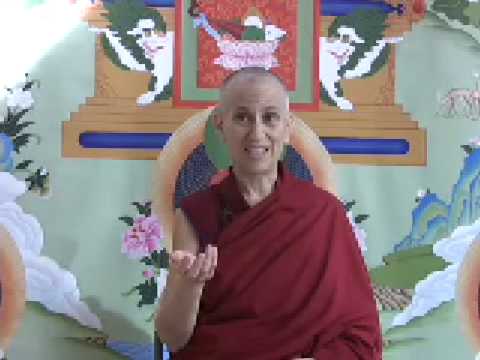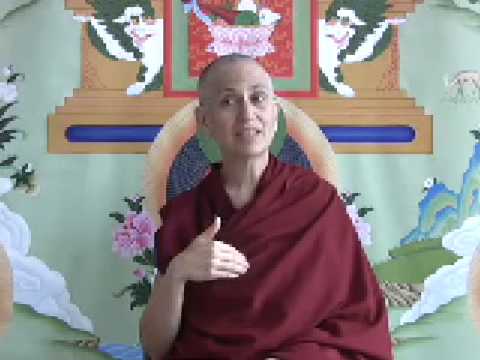Emptiness and the object of negation, part 3
The last of three talks on emptiness and the object of negation for the Bodhisattva's Breakfast Corner.
Audience: One of the things that came up for me in this retreat when I was meditating on the body is that I realize that, in this culture—and I think this is pretty common—there is some sort of sense like there is a space inside here where the person is. Like it’s not all full of flesh and fluid and bones, but instead, there’s somewhere in there, like a little room or something, where the person is. [laughter] I went around my whole life thinking there is, inside everyone, a little room where the man is. And you start looking in your body and see there is no space in there for where it would be.
Venerable Thubten Chodron (VTC): Right. That’s exactly it. Isn’t it? It seems like there is a person findable in there. You can see why the ancient people used to think that in the pineal gland there was a little homunculus that was the person. And you’re saying that’s exactly how it feels—exactly like some little room, something, somewhere inside, maybe in your heart center, a little room where Kathleen exists. A little room where Semkye exists. A little room where Dallas exists. And so, we’re all existing right there in this little room.
Remember last year I taught you the meditation on the body and dissecting the elements of the body? That meditation is very good for overcoming attachment to the body, but it also leaves us with the sense of “Where am I in this?” Because we associate “I” as being something very pure, something very wonderful, but when we look inside the body, we don’t find that. So, where is this pure wonderful “I” that’s residing somewhere inside the body?
Audience: Then there’s the next thing to grab onto which is the formless consciousness that I think she’s alluding to that is riding the wind of the body and that goes into the Bardo. My mind then wants to latch onto that.
VTC: That’s right, exactly. That is me. There is something personal about the consciousness. What in the world is personal about a consciousness? There’s an eye consciousness perceiving yellow. What is person? What is a person about a cognition of yellow? Then you say, “Well, that’s just sense consciousness. I’m thinking!” Okay, so there’s the thought of yellow. Now what is personal about the thought of yellow? What person is thinking the thought “yellow”? What is so personal about a thought of yellow? It’s just a thought of yellow. Then we say, “It’s my thought of yellow!” So, you see, we’re always holding. But who’s the “my” that owns that thought of yellow?
This is very hard to recognize because we’re so used to everything being completely mushed up together so completely that it’s hard to tease it apart. At first, when we look at it, we say, “This doesn’t make any sense. It’s all wrong.” That’s what I used to say to Gen-la. He was very patient: “Oh, you just don’t understand the object to be negated. Hehehe.” No Gen-la, it’s not “hehe! You just don’t understand!” [laughter]
Venerable Thubten Chodron
Venerable Chodron emphasizes the practical application of Buddha’s teachings in our daily lives and is especially skilled at explaining them in ways easily understood and practiced by Westerners. She is well known for her warm, humorous, and lucid teachings. She was ordained as a Buddhist nun in 1977 by Kyabje Ling Rinpoche in Dharamsala, India, and in 1986 she received bhikshuni (full) ordination in Taiwan. Read her full bio.


